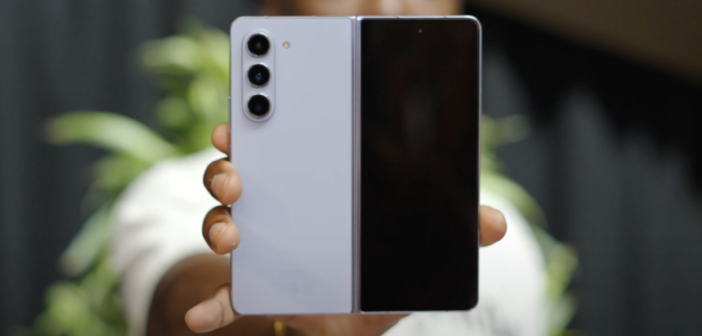It’s finally happened – Samsung’s biggest foldable release of 2023 is upon us, and the Galaxy Z Fold5 promises to bring the best in foldable tech that Samsung can offer fans and enthusiasts. This premise makes the device’s launch all the more interesting, as a quick look at the Galaxy Z Fold5 evokes rather deep feelings of deja vu, especially when compared to its predecessor.
Perhaps what we mean is that between last year’s Z Fold4 and the 5, it doesn’t seem like Samsung has made that much of a drastic difference in terms of improvements and such. But is that truly the case with the Galaxy Z Fold5? Let’s take a look.
External Design and Screens
Generally speaking, there are a lot of similarities between the Z Fold5 and the 4 when it comes to how they look, but a closer inspection does give way to some nuances when it comes to design. For one, the Z Fold5’s inner display now features a much-reduced gap when closed, reducing the amount of dust and dirt that could potentially be trapped and resulting in a much cleaner look overall.

The camera module on the rear panel has also seen some modifications – while it still features a triple-camera setup, the individual camera lenses on the Z Fold5 protrude similarly to the one on the S23 series phones, compared to the Z Fold4’s setup which featured recessed camera lenses (as with the Galaxy S22).
The screen on the Galaxy Z Fold5 largely remains the same however – the external display still comes with a 6.2-inch AMOLED panel, a 120Hz refresh rate and 904 x 2316 pixel resolution, 23.1:9 ratio and a protective layer of Corning Gorilla Glass Victus+, which is very similar to last year’s Z Fold4.

The same can be said for the inner folding display, at least in terms of size and resolution. Measuring 7.6 inches, the foldable AMOLED panel still comes with a 120Hz refresh rate and 1812 x 2176 pixel resolution, although it does come with less gap when folded now, as mentioned earlier.
Internal Hardware and Cameras
Perhaps the biggest change with the Galaxy Z Fold5 is the internal hardware that Samsung has packed into the device. Inside you’ll find Qualcomm’s Snapdragon 8 Gen 2 chipset, which is paired alongside several storage configurations, which are available in 256, 512, and 1TB variants – RAM meanwhile stays at 12GB for whichever storage capacity you choose. Again, it’s largely the same configuration as with the Galaxy Z Fold4, so the biggest upgrade in this regard would be the much faster 8 Gen 2 chipset versus the 8+ Gen 1 from last year.

Even the battery tech stays mostly the same – the Galaxy Z Fold5 is powered by a 4400 mAh unit, the same capacity found in last year’s Z Fold4. Charging speeds likewise remain at 25W wired, 15W when using wireless charging, and 4.5W reverse wireless charging. It’s kind of a disappointment, as Samsung could have used this opportunity to bump up the charging capabilities to a slightly faster speed.

As for optics, there’s essentially zero changes with the cameras onboard the Galaxy Z Fold5 when compared to the Z Fold4. Samsung has retained the cameras on its newer device, so we’re getting a triple camera setup on the rear panel with a 50MP main camera, 10MP telephoto lens, and 12MP ultrawide lens. The front of the phone likewise retains the 10MP selfie camera, paired with a 4MP shooter underneath the inner folding display.
Software, Pricing, and Availability
The Galaxy Z Fold5 will ship with Android 13 onboard, which is not at all surprising as Android 14 has yet to be released for the public. This is layered with One UI 5.1.1, which does come with a set of exclusive Samsung apps and features geared towards productivity. Of course, this does include S Pen support which is a much-welcome feature, although we would’ve preferred a built-in slot to house Samsung’s signature stylus.

The phone will be available for pre-orders starting on 26th July, and will be on sale starting on August 11. The Galaxy Z Fold5 will be available in three different colour variants including Icy Blue, Phantom Black, and Cream, and will come priced at £1,749 for the base 256GB version, £1,849 for the 512GB variant, and £2,049 for the 1TB version.
Given the crazy amount of similarities between the Galaxy Z Fold5 and the Z Fold4, it can be hard for discerning buyers to justify getting this year’s model, especially if they are upgrading from last year’s Samsung foldable. On one hand, you do get better performance courtesy of the Snapdragon 8 Gen 2 chipset, although the rest of the phone will be very similar to the Z Fold4.
What do you think? Will you be upgrading this year? Let us know in the comments below!




